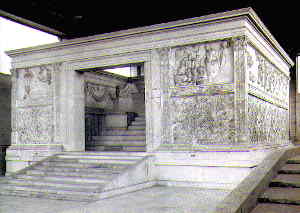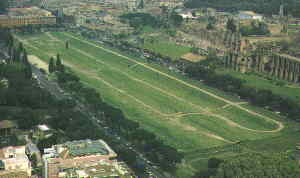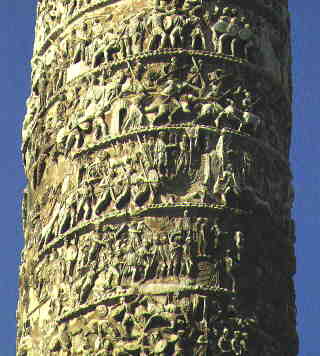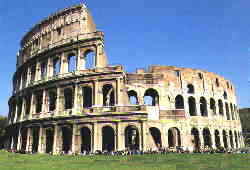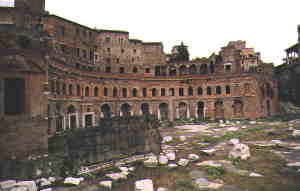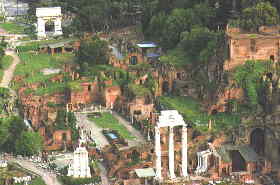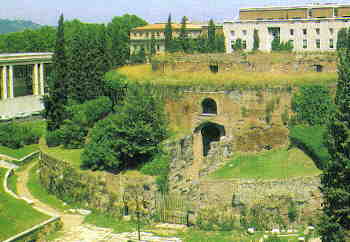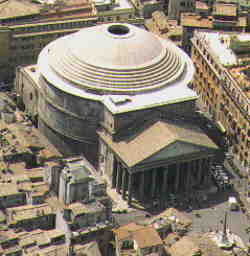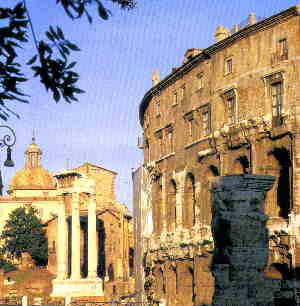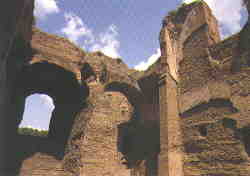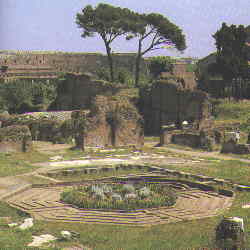 |
The hill which was the first nucleus of city life in Rome became thereafter the Imperial Headquarters. It is surmounted by the Villa Farnese, which, with its many gardens and staircases, covers much of the hill, and hence a good deal of the architectural remains of the Roman age. It was in the dirt around the base of this hill that Romulus drew the sacred line that outlined the confines of his city. |
